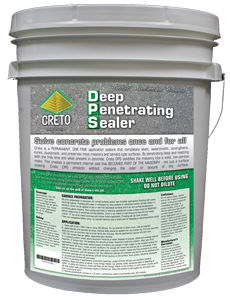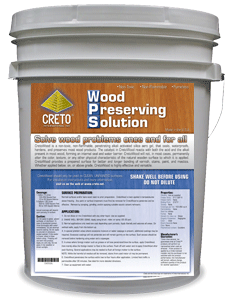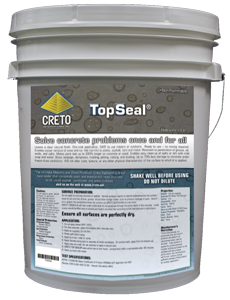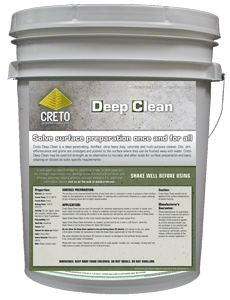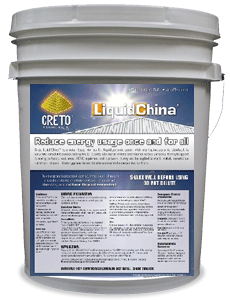Repair Mortar Overlay Application Instructions
Typical Applications
- Floor leveling/smoothing
- Patching and repair
- Spalled/deteriorated conditions
- Concrete / asphalt renovation and resurfacing
- Vertical and overhead concrete renovation
- Pedestrian and vehicle surfaces
- Renovation of gypsum underlayments
- Slip resistant surfaces
- Abrasion resistant surfaces
- Reduction of moisture vapor emissions through slabs or walls
- Asbestos tile encapsulation
- Recreational surfaces, repair / smoothing
- Highways/ bridges / sidewalks / curbs
- Waterproofing
- Parking structures, Warehouses/industrial floors
- Pool decks
- Driveways
- Loading docks and ramps
- Masonry walls
Surface Preparation
Prior to any CRETO products’ application, a site survey is required to determines the suitability and proper application for each specific project.
Unless intended as a temporary repair, the first consideration is structural integrity. Any areas not structurally sound shall be repaired or replaced prior to application. In many cases, the repairs can be made with CRETO products.
All concrete, wood, asphalt, masonry, metal and other surfaces must be structurally sound, clean and free of coatings, curing compounds, dirt, oils, grease, laitance, efflorescence, mildew, fungus, or any contaminant that prevents good adhesion.
A combination of cleaning methods can be used, Shot blasting, sand blasting and high pressure water blasting have proven to be effective methods of coating and contaminant removal. Chemical removal, such as degreasing and etching with CRETO Deep Clean can also be used. The least destructive method that will accomplish the desired end result should always be selected.
Extremely oily surfaces can be pre-heated with a propane torch to bring the oils to the surface, followed by an application of Deep Clean and a water blasting. Repeat this procedure and process until all such surfaces are free of oily substances.
Concrete Surfaces: New concrete shall be allowed to cure minimum of 72 hours and shall be neutralized prior to application.
Asphalt Surfaces: These surfaces have characteristics different from concrete and require special consideration. Sound surfaces can be overlaid with CRETO products. Note: Hotmix asphalt should not be applied prior to application of CRETO products.
Wood Surfaces: Surfaces must be secured with screws to the structure, and all holes, seams and cracks shall be taped prior to application.
Hairline Cracks: Minor cracks or spalls do not require pre-filling. RMO Squeegee Mix made using CRETO RMO should be allowed to flow into the cracks during an initial squeegee application. A flowable mixture will penetrate the cracks and surface and create better adhesion than a drier patching mix. Another method Is to pour Squeegee Mix into cracks, voids, spells or removed areas and allow to self level until filled.
Larger Cracks: Depending on extent of cracking, an anti-alkaline, elastic matting should be embedded in Squeegee Mix directly over individual cracks or over the entire surface, after cracks have been filled with squeegee mix by squeegee application or pouring. See details on application of Squeegee Mix later in this section. Note: Although no crack repair system is 100% effective, this system has proven successful on many applications.
Questionable Surfaces: Chalky, dusting, and pigmented surfaces should be pre-treated with CRETO DPS and pre-dampened with “Pre-Mix”. I.e. (1) part CRETO RMO to (1-2) parts clean water.
Expansion Joints: Existing expansion joints should always be maintained. If joints are
already filled, mask joint and remove masking after application. In unfilled joints, place a temporary filler that can be removed after application. Prior to filling joints with joint filling material, brush apply two (2) applications of RMO Squeegee Mix to edges of joints to provide a waterproof surface. Saw cutting can be used to re-establish expansion joints and can also help when a joint should have been installed in the original surface.
Mixing Equipment
- Drill and paddle
- Mortar mixers or Transit mixers
- Cement trucks
Application Equipment
- Squeegee
- Straight edge
- Fresno trowel
- Dragbox
- Asphalt emulsion sprayer
CRETO RMO Mixes
There are many different design mixes for different applications from very fluid squeegee mixes to dry, zero slump, patching mixes. For a specific application, please refer to the “Mixing Ratios and Repair Chart” on every pail of RMO and included as the last page of this Product Spec. The five (5) most common RMO mixes are:
1. Pre-Mix:
The ratios of RMO concentrate to water vary from1:1 or 1:2 for 1 /16” to 1 / 4” all the way up to 1:40 for 8” to 10” thick or thicker applications.
More water may be added to a thin (I.e. 1:1) “Pre-Mix” if a lower slump mix is required.
(I.e. thinning a 1:1 Pre-Mix to a 1:40 Pre-Mix, is OK)
More moisture can be added to any CRETO Mortar or Overlay mix made from RMO, but, you must use the Pre-Mix not water.
2. Primer Mix/Bond Coat:
Consists of the above “pre-Mix” blended with Portland Type I & II cement. The mix ratio is 1:1:1.
Primer Mix/Bond Coat is used as the name implies as a primer or bonding coat applied prior to the repair with Patching or Formless Mixes, or overlay.
3. Squeegee Mix:
By sheer volume, this is the most common mix design, primarily for overlays, consisting of:
- Mix 2.5 gallons CRETO RMO with 2.5 gallons clean water. Mix well.
- Add one 5 gal pail of Portland cement. Mix until no lumps remain.
- Add two 50 pound bags silica sand. Mix until no lumps remain.
Size of sand determines thickness and texture of coating. - Add sufficient water, not to exceed 5 gallon total, to make a good squeegee consistency.
By volume, this mix is: 1 RMO Concentrate /1 water/2 cement /4 sand.
Mixing is to be by mechanical means. A 1/2 drill motor with proper mixer works well for small batches. Mortar type mixers can be used for larger batches.
When color pigment is to be added, separate mixing of dry materials and wet materials is recommended prior to blending. This procedure helps assure that all cement and color particles are properly blended and dissolved.
4. Patching Mix:
Patching Mix is used for patching spalls, cracks, and filling uneven or non-level surfaces.
Mix standard squeegee mix. More sand may be added, up to four (4) parts sand to one (1) part cement. By volume this mix is: 1 RMO /2 water /2 cement /up to 8 sand.
5. Formless Mix:
Formless Mix is used for vertical and other patches where a non-slump consistency is desired.
- Pre-blend sand and cement, one (1) bag cement to two to three (2-3) bags silica sand.
- Make CRETO RMO Pre-Mix.
- Add Pre-Mix to pre-blended dry mix. Add only enough liquid to make the mixture moist
enough to pack in hands without getting hands wet (dry packed snowball consistency).
Squeegee Application
1. Some applications require priming with Pre-Mix or Primer Mix/Bond Coat as previously discussed. Otherwise:
2. Pre-moisten surface prior to application by lightly spraying with water. Do not puddle. Keep surface damp throughout application.
3. Pour CRETO Squeegee Mix onto surface and spread evenly by squeegee, straight-edge, dragbox, broom, brush or trowel. For large jobs, a sealcoat machine may be used.
Keep surface in front of squeegee moist. This is important for ease of application and maximum bond. Allow to dry.
4. Scrape or stone to remove any ridges or irregularities from surface.
5. Repeat procedure when equipment can be moved onto surface without disturbing or damaging product. Minimum one (1) hour at 70 degrees F. (Under direct sunlight at less than 1/8” thickness).
Note: Use Squeegee Mix to resurface in thin layers. When dry, squeegee applications can be sanded between applications or after final application with an asphalt seal-coat type terazzo stone or sandpaper attachment. A floor buffing machine can be used to produce a final surface uniform in texture and appearance.
Spray Application
CRETO RMO mixes can be sprayed with hopper guns, rotor-stator or diaphragm pump equipment such as used for pumping and spraying other cementitious materials.
Fluid content of mix combined with size and quantity of aggregate enables application of finishes from “orange peel” to globs of material for knock-down finishes. Spraying is an effective method of applying decorative finishes.

